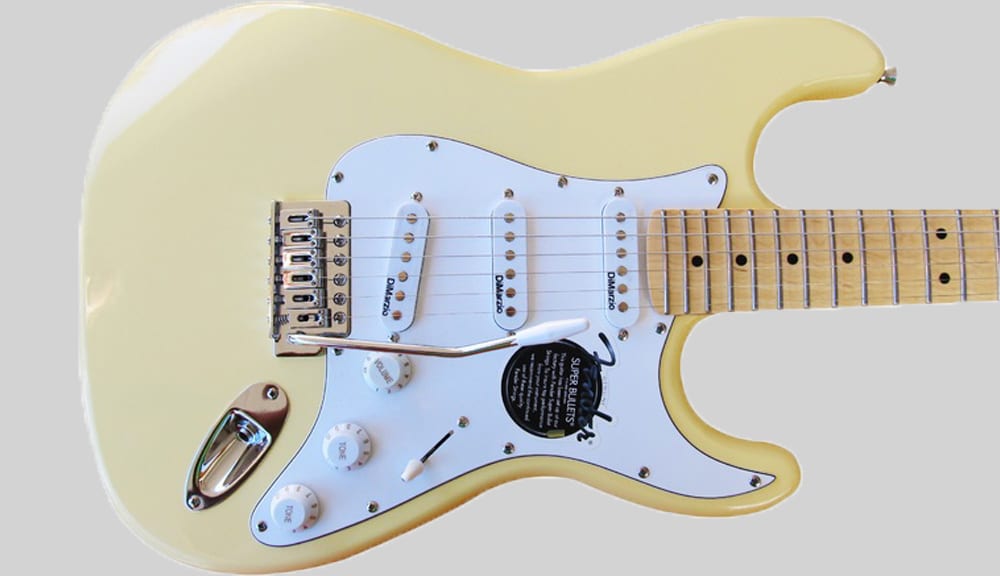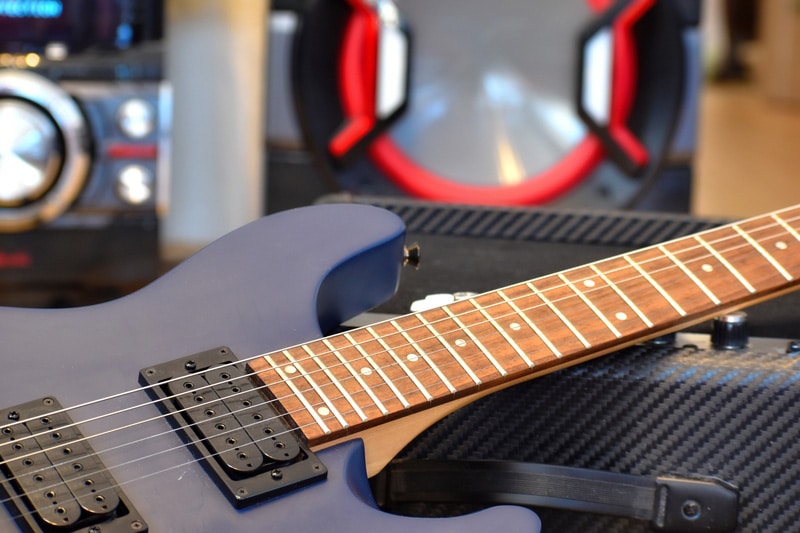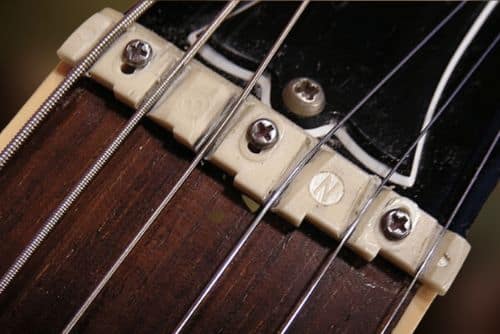
The guitar has always had a special place in the music world. Even after the advent of new innovative musical instruments, it still holds its own as a popular musical instrument. Whether it is its versatility or affordability, it is loved by music enthusiasts all over the world. You can play it with a band or solo, making it a versatile option.
If you are a music lover and want to get your first guitar, there are a few considerations before buying it. The design, construction, tone, and brand are some of the most important factors to consider before purchasing a guitar. If you have done some research on guitars, you must have heard about Fender.
It is a popular company known for offering premium quality guitars and their accessories. Thanks to its quality products, it has earned a sound reputation in the industry. It is best known for its well-constructed guitars. The Fender VG Stratocaster is undoubtedly one of the best offerings by Fender.
It is a durable and great-sounding guitar with many features to offer the best playing experience. It can play lots of genres and is quite popular among users. However, no matter how well-constructed a guitar is, it will show problems sooner or later, and the same is the case with the Fender VG Stratocaster guitar.
Luckily, most of them can be fixed easily. This article will take you through some of the most common Fender VG Stratocaster guitar problems and their effective workarounds. Let’s delve further!
How to Fix Some Common VG Stratocaster Problems
Some of the problems that you will likely run into while using the Fender VG Stratocaster guitar are:
Intonation problems are quite common with the Fender VG Stratocaster guitar. In simple words, intonation refers to the accuracy of the notes of a musical instrument. The intonation of the Fender VG Stratocaster guitar may not be up to the mark sometimes, which could be due to various reasons.
If your notes are higher or lower than they should be, it could be because of poor intonation. The intonation of any musical instrument depends on several factors, and you may need to dig deeper to get to the root of this problem. Start by checking your guitar strings.
If they are too tight, the intonation will be messed up, and you will get inaccurate tones. The length of your guitar strings also affects intonation. If your string is shorter, you may experience sharper tones. Fortunately, you can quickly fix this problem by making your guitar strings longer.
Adjust the bridge saddle backward and make the necessary adjustments to increase your strings’ length. Similarly, you may need to shorten the string length as well. If your notes are sharper, consider making the strings longer. On the contrary, shortening the string length will fix the problem if they are flatter.
Whatever the case is, you can adjust the length by moving the bridge saddle forward or backward. Furthermore, take a look at the fret and the bridge of your Fender VG Stratocaster guitar. They play a vital role in defining your guitar’s tone; if they happen to be in the wrong place, it will lead to poor intonation.
The frets are not positioned randomly; the manufacturer companies use mathematical equations, and there is a whole process behind their positioning. So, if they are not set correctly, you may experience poor intonation. Consider re-fretting your Fender VG Stratocaster guitar to get the bright and balanced tones again.
In addition to that, the nuts may also wear out as your guitar ages. It usually happens due to the friction of the guitar strings. If that’s the case, consider replacing the nuts to fix the intonation problem. And yes, if you have set the nut too high, bring it down a bit.
As you can see, there could be many reasons for poor intonation. From guitar nuts to frets, you will need to examine many components to identify the cause, which may take you hours. So, consider visiting a technician to resolve this issue.
- Catching Scratches
Another common problem many users have reported while using the Fender VG Stratocaster guitar is that it catches scratches quickly. Although the guitar is made of good quality materials, it can still get scratched, just like most other guitars on the market. It happens when your guitar’s body comes in contact with some sharp object.
The scratches do not affect your guitar’s performance or tone, but no one likes getting scratches anyway. They can ruin your guitar’s aesthetics, and if you get to perform in live performances often, they can leave a bad impression on your audiences’ minds. If the scratches are shallow, they can be removed.
However, if your Fender VG Stratocaster guitar has deep scratches, you will have a hard time trying to get rid of them. You can use an abrasive cleaning agent to eliminate scratches, but make sure that the solution is suitable to be used for this purpose.
The last thing you’d want is to damage your Fender VG Stratocaster guitar even more while trying to fix it. Toothpaste has also worked for some people, but we do not recommend using it. The best thing that you can do to avoid getting scratches is to use a guitar cover to store your Fender VG Stratocaster guitar.
These guitar covers are available at affordable prices and are an excellent investment since they ensure your guitar’s well-being. So, get yourself a guitar cover and consider keeping your guitar on the cover while going outdoors to protect it from scratches.
- Connectivity Problems
Connectivity problems in the Fender VG Stratocaster guitar can also give you headaches. Many users have complained that this guitar does not connect to some guitar amp models. A guitar amp is a tool that is used to amplify guitar signals.
Of course, this problem is quite concerning for the users as many users use amps nowadays. Check its compatibility if the Fender VG Stratocaster guitar is not connecting to your guitar amp. The VG Stratocaster is among the latest guitars by Fender, and it may not be compatible with some old guitar amp models.
So, make sure that the amp is compatible with the guitar before purchasing it, or else it may not connect. You can refer to the manufacturer’s website to check whether an amp is compatible with a guitar. Furthermore, you can also refer to the operator manual. You can also connect it to another guitar to check whether it is working.
- Design
It is seen that the design of the Fender VG Stratocaster guitar is not suitable for aggressive genres. The cable port is located in the front of the guitar. While playing hard metal or rock, it can be a hindrance for your playing hand. So, if you are to play aggressive genres, you may not be able to play freely.
The Bottom Line
The Fender VG Stratocaster is among the most sought-after Fender guitars. We have used this article to outline four common problems that many users have faced while using this guitar. You may experience lousy intonation, or it may not connect to your guitar amp. Its surface also catches scratches quickly.
The solutions mentioned above have worked for many users, so consider trying them before contacting Fender customer care service.





I own other custom shop Guitars the fender VG is a real working man Guitar you can change tuning in a split second .